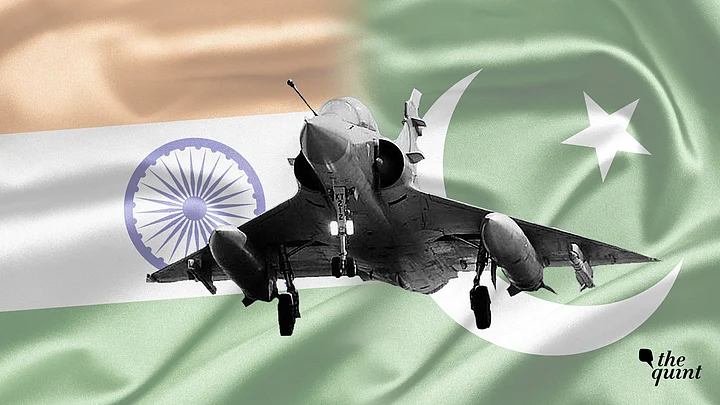Twelve days after the Pulwama terror attack that killed 40 CRPF jawans, the Indian Air Force, in the wee hours of Tuesday, 26 February, bombed the largest Jaish-e-Mohammed (JeM) training camp in Pakistan’s Balakot.
The Indian Air Force used 12 Mirage 2000 Indian Fighter jets to drop 1,000 kg bombs, destroying terror camps across the LoC on the Pakistani side at 3:30 am.
A day after the Pulwama attack, PM Modi had chaired a meeting of the Cabinet Committee on Security, in which it was decided that India needs to send a strong message, NDTV reported.
Catch all the updates on the IAF strikes here.
Here’s how operation Balakot was carried out.
Doval, Dhanoa Monitored Operations Through the Night
Quoting government sources, news agency ANI reported that National Security Adviser (NSA) Ajit Doval and IAF chief BS Dhanoa monitored the operations throughout the intervening night of 25-26 February.
“The NSA and the IAF Chief were awake throughout the night and into the next day as they were monitoring the entire movement of Mirage fighter aircraft which had to go inside Pakistan along with the Sukhoi-30s operating from Halwara and Bareilly air bases sitting inside the Air Force war room inside the Air Headquarters.”
Director General of Air Operations Air Marshal Amit Dev and his team played a crucial role in the success of the air strike which was being monitored from IAF war room in the Air Headquarters in New Delhi, reported ANI quoting sources.
Other than NSA Doval and IAF chief Dhanoa, only five people knew about the attack – Modi, the heads of RAW and Intelligence Bureau and the other two service chiefs, reported Hindustan Times.
Support Jets Were Kept Ready
After the formation of 12 Mirage 2000 jets took off from their respective air bases in Agra and Gwalior, another support formation of Sukhoi fighter jets were up in the air to defend the Indian air space, if the need arose.
Advanced warning and control system (AWAC) aircrafts led by Natra jets helped monitor activity of Pakistan fighter jets and directed Indian planes navigate through the Pakistan air space.
Mid-air fuel tankers Ilyushin 78s were also kept ready in the air to provide support to Indian fighter jets, according to ANI.
The news agency reported that Pakistani Air Force F16s were scrambled to retaliate to Indian incursion but the formation of Indian jets outnumbered them and made a hasty retreat after ‘destroying their intended targets’, reported ANI.
IAF used its finest pilots and the best jets for the mission. According to The Indian Express, the first munition to hit the target was at 3:45 am after which the jets continued to rain down the targets on the hilltop.
Air Defence System Monitoring Pakistani Retaliation
After Indian jets returned from Pakistan, the Indian air defence system were on high alert and constantly watching out for any reaction from Pakistani aircrafts.
The first Pakistani retaliation was spotted from the western sector in Gujarat when a Pakistani unmanned aerial vehicle (UAV) tried to enter Kutch but was shot down by the Israeli-made SPYDER Missile defence system.
Navy Sent Warships Confused Pakistani Authorities
The Navy too had halted its exercise TROPEX on the western seaboard and sent its warships on forward patrol towards Pakistani Navy to confuse the Pakistan authorities.
(With inputs from NDTV, ANI, The Indian Express and Hindustan Times)
